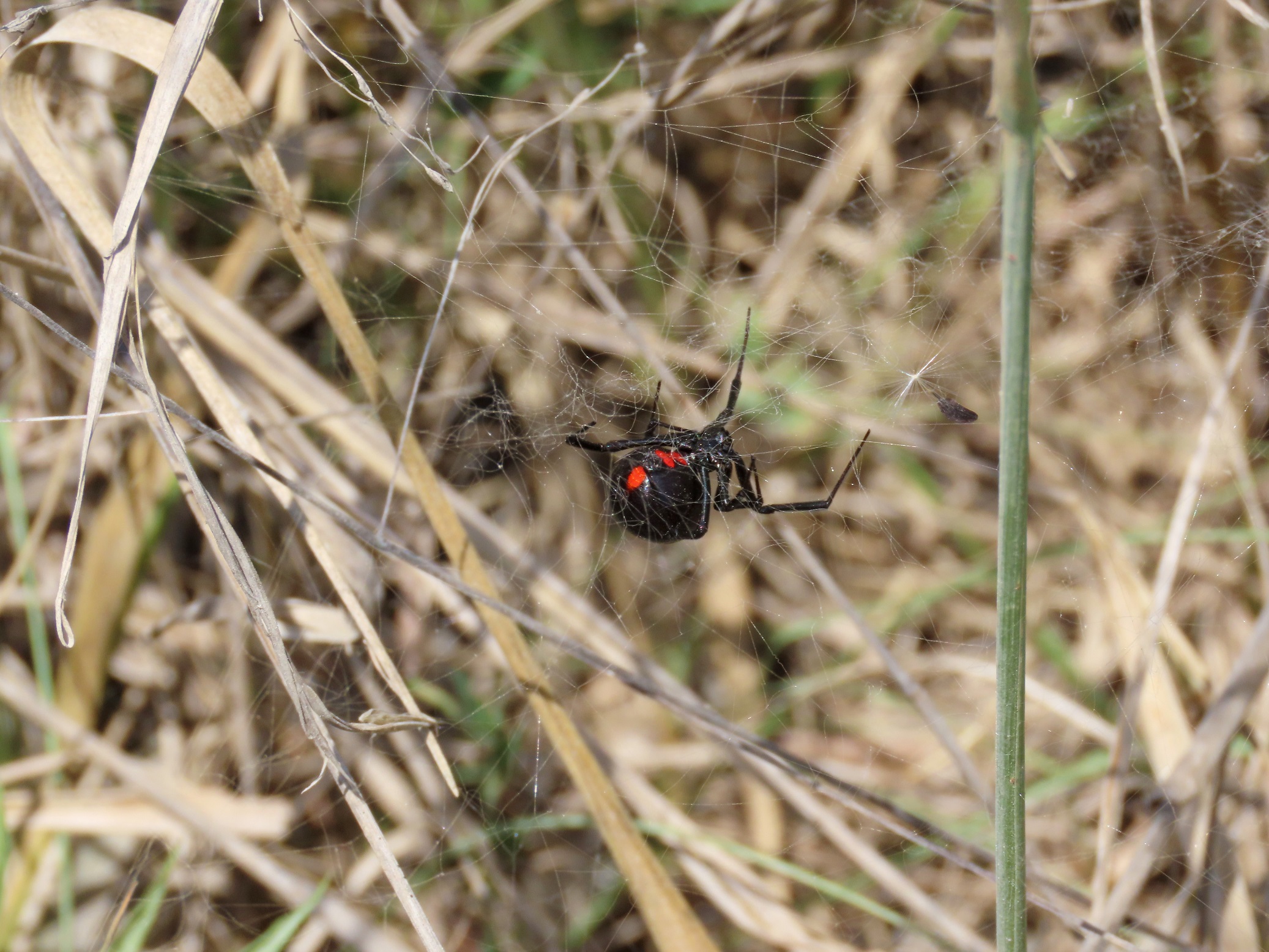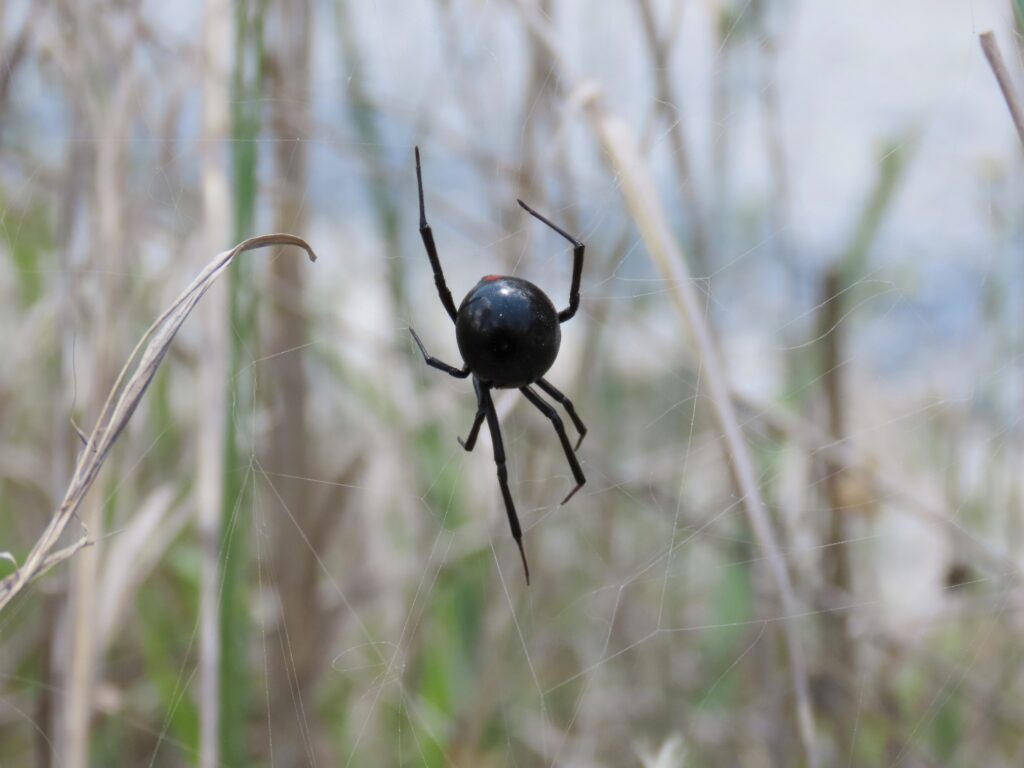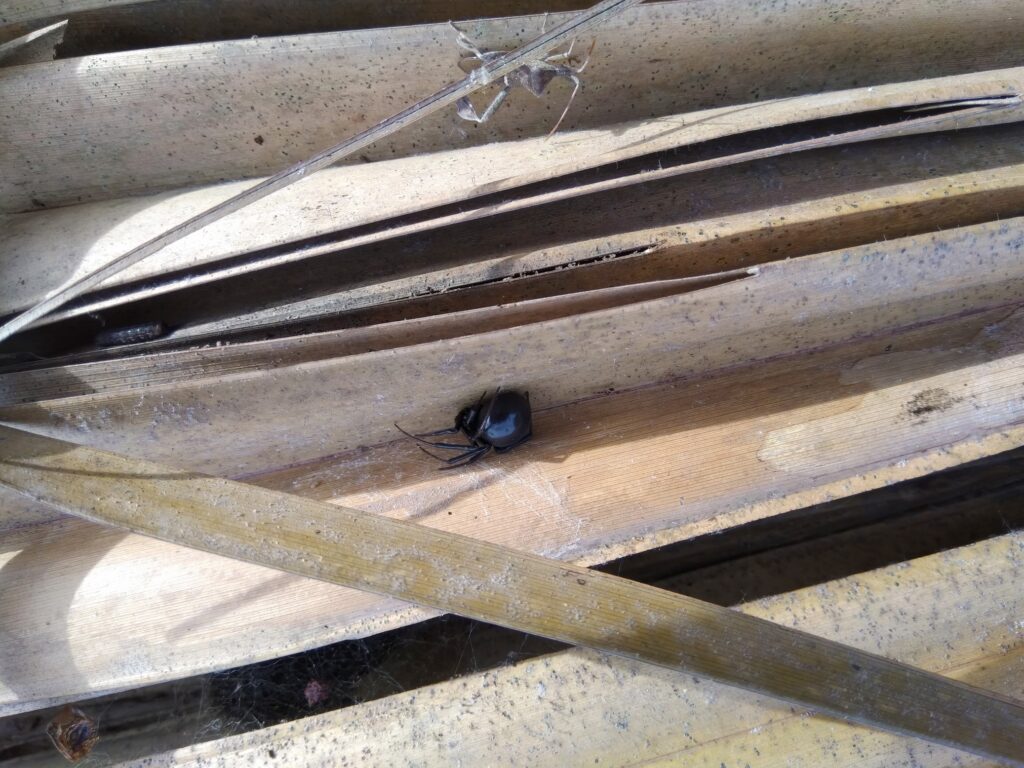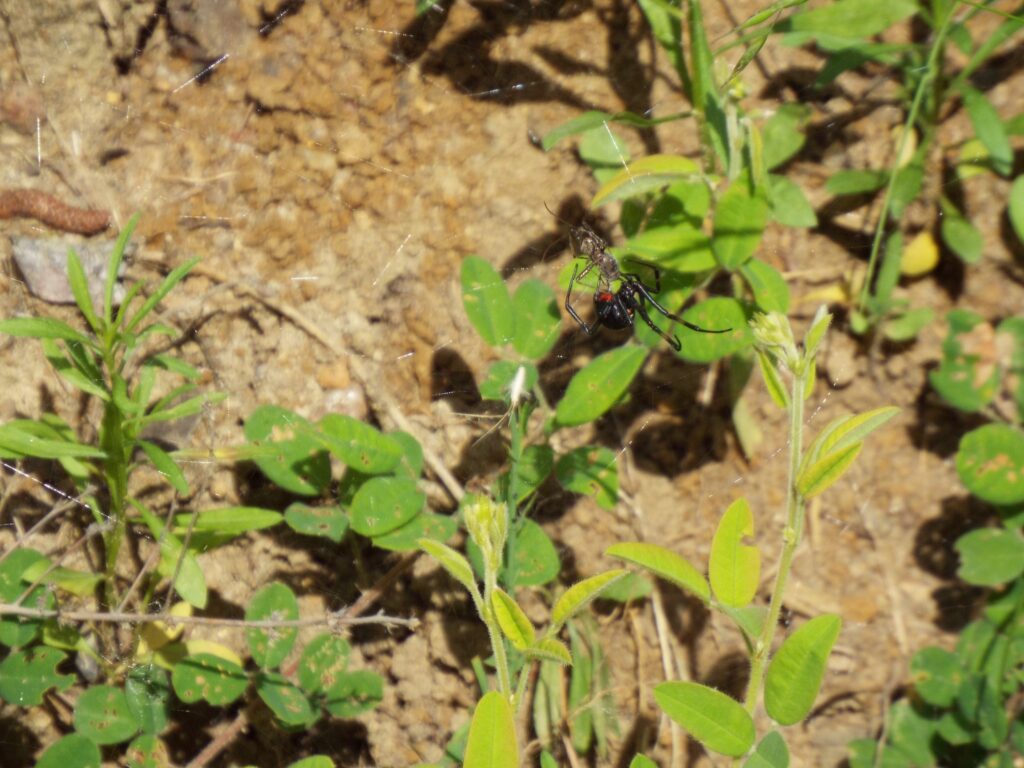




This week for Flora and Fauna Friday it’s the most feared arthropod in all the south, the Southern Black Widow (Latrodectus mactans).
The Southern Black Widow is a member of the Cobweb Spiders, family Theridiidae, and the Widow Spiders are the largest members of this family. They are found throughout the Lowcountry. An adult female Black Widow is usually about an inch-and-a-half in spread with a body about a half-inch long. The female Black Widow has a spherical abdomen, round cephalothorax (head plus thorax), and slim, almost hairless legs. They are usually a glossy ink-black across their entire body with a distinctive scarlet hourglass on the bottom of the abdomen and a scarlet-red spot just above their spinneret. Males are roughly half the size of the female with a wrinkly egg-shaped abdomen not much bigger than their cephalothorax. Males are also more colorful with tan and black banded legs and ivory and orange markings across the back, while still retaining the hourglass below. Immature females resemble the colorations of an adult male but with feminine proportions. Black Widows are found in open wooded areas and prefer to make their webs in drier locations and hidden from view. In the wild they make webs in bushes, thickets, brush piles, crevices, burrows, and hollow stumps. However, they have an affinity for web building in and under human structures, such as sheds, wood stacks, piles of rubble or masonry blocks, and crawl spaces. Their webs are thin, three-dimensional, and disorganized. The egg-sac of the South Black Widow is a roughly half-inch diameter sphere of tan, tightly wound silk.
Black Widows are well known, apart from their hourglass mark, for two things: their mating habits and their venom. Female Black Widows are reported to be voracious hunters of their own suitors, which earned them the Widow common name. Although it is true that they will not shy away from dining on their dates, more recent studies indicate that impromptu dinner dates are more a function of how well fed she is and how long the male sticks around than any habitual or instinctive preference of female Widows, with most males escaping unharmed. Moving to their other trademark, the venom of the Southern Black Widow is neurotoxic and causes incredibly painful, involuntary muscle spasms that spread from the site of the bite. These spasms can prevent breathing and cause death by suffocation. However, the dangers of a Black Widow bite have also been exaggerated. Although Black Widow venom is irrefutably capable of killing an adult human at the right dosage, it is difficult for the spider to inject that much venom to the right area of the body in a single bite. Unless the victim has underlying pre-existing conditions, the quantity of venom injected by a bite is very rarely enough to be fatal and symptoms take hours to manifest. However, that does not mean a Black Widow bite is not excruciatingly painful nor medically serious. Anyone bitten by a Black Widow should still seek immediate medical attention, just know it’s by no means a guaranteed sentence.
As a bonus, we also have another common species of Widow, the Brown Widow (L. geometricus). The Brown Widow is much the same size and shape with similar habits to the Southern Black Widow but, it is brown. It’s also covered in fuzz and can have a pale marbling pattern across the abdomen. Another notable difference between the two is the egg-sac. The Brown Widow’s egg-sac is spiked, giving it a somewhat woolen appearance and making it very easy to identify. The Brown Widow is not native to the Southeastern United States. It was introduced to Florida and spread north over time. It is now found throughout the coastal regions of Georgia and South Carolina. Brown Widows are found in the tropics worldwide and need hot, humid climates. They have a marked preference for human structures but, thankfully, their bite is far less potent than our native species, but still quite painful. The Northern Black Widow (L. variolus) is a third Widow species that can be found in South Carolina and it is very similar in appearance to the Southern. However, it is not nearly as common as the other two species down here on the coast.